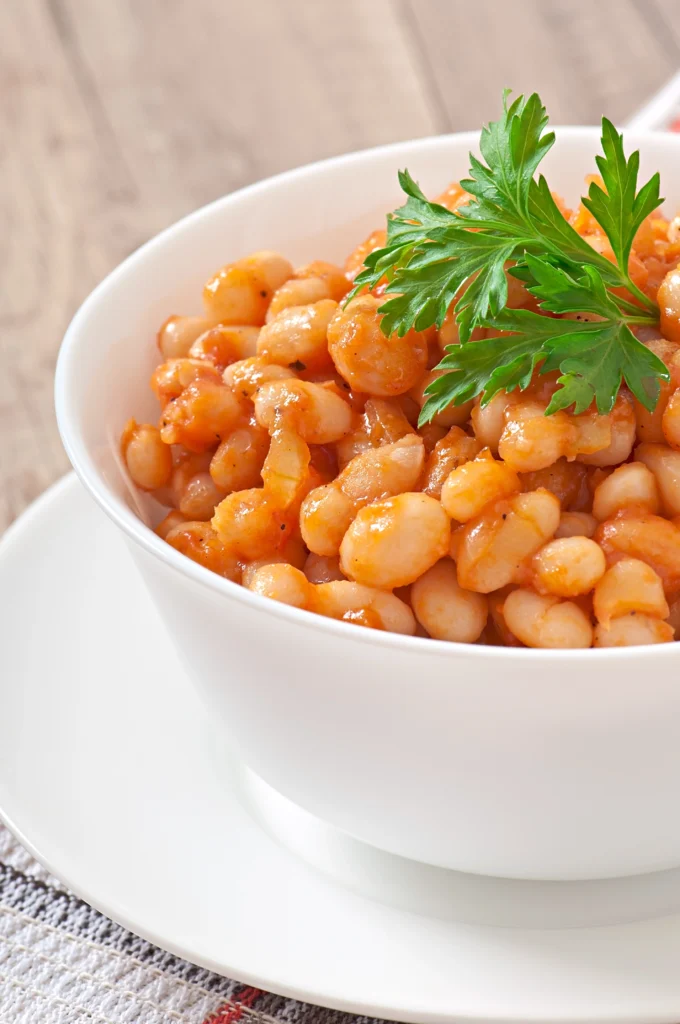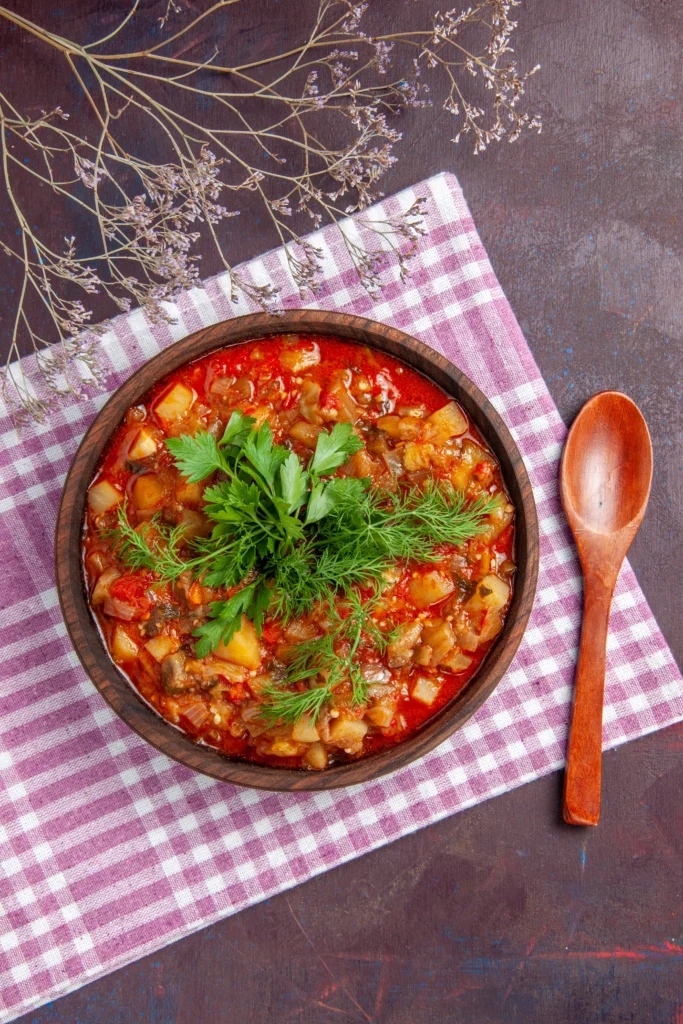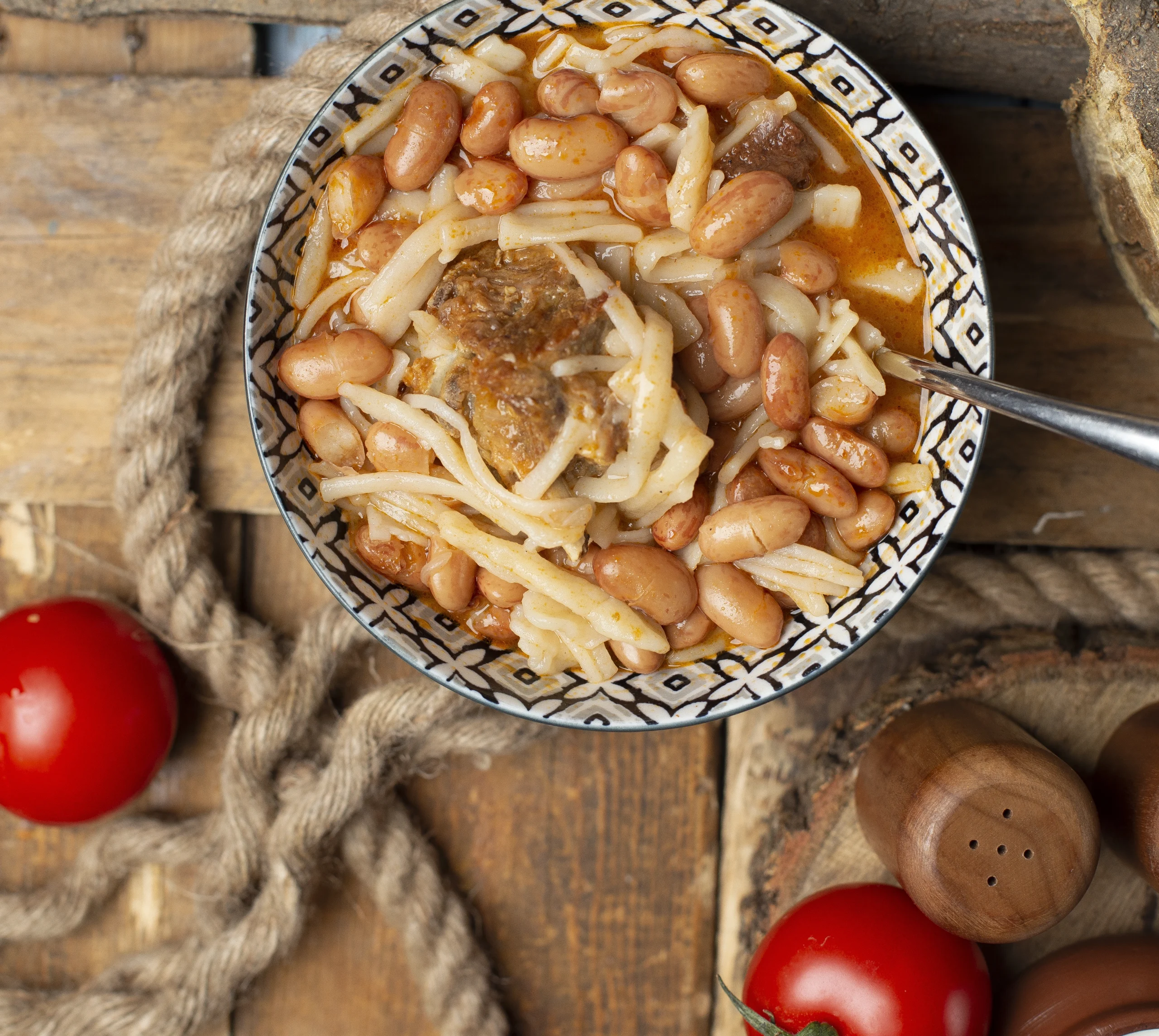Cannellini beans may not grab headlines, but they’re one of the most versatile and dependable ingredients you can keep on hand. These creamy white beans—also known as white kidney beans—offer a neutral, slightly nutty flavor that works beautifully in everything from rustic stews and refreshing salads to hearty pastas and smooth dips.
What makes cannellini beans stand out is their unique balance of flavor, texture, and nutrition. They’re rich in plant-based protein and fiber, low in fat, and naturally gluten-free, making them ideal for vegetarian, vegan, and health-conscious meals. Plus, they absorb seasoning like a sponge, turning any simple broth or dressing into a flavorful experience.
Whether you use them canned for convenience or dried for maximum texture and cost savings, cannellini beans are a budget-friendly pantry staple that opens up endless meal possibilities. In this article, we’ll explore the best ways to cook with them, plus 15 delicious recipe ideas to inspire your next meal.

What Are Cannellini Beans?
Cannellini beans are a type of white bean most commonly used in Italian cuisine, particularly in dishes like minestrone, Tuscan stews, and pasta e fagioli. Often referred to as white kidney beans due to their shape and size, cannellini beans are larger than navy or great northern beans, with a creamy texture and mild, slightly nutty flavor.
These beans are highly absorbent, meaning they soak up the spices, broths, and sauces they’re cooked in—making them a fantastic foundation for both subtle and bold flavor profiles. Their silky interior and thin skin also make them ideal for blending into dips, purees, or creamy soups.
Cannellini beans are available dried or canned, with canned versions offering convenience and dried beans providing a firmer texture and more control over seasoning. Naturally high in fiber, protein, iron, and magnesium, they’re not only versatile in cooking but also pack a strong nutritional punch, especially in plant-based diets.
Table of Contents
Tips for Cooking Cannellini Beans from Scratch
Cooking dried cannellini beans from scratch is easier than you might think—and the payoff in texture and flavor is well worth the time. Here’s how to do it right:
1. Soak for Better Texture (Optional but Helpful)
Soaking beans overnight in cold water (or for 6–8 hours) reduces cooking time and helps them cook evenly. For a quicker option, use the quick soak method: cover beans with water, bring to a boil for 2 minutes, then let sit for an hour.
2. Season the Water Properly
Contrary to myth, adding salt to the soaking or cooking water does not toughen the beans—it actually enhances flavor and improves texture. Add a teaspoon of salt per quart of water.
3. Simmer Gently
After draining the soaked beans, add fresh water and bring to a gentle simmer (not a boil) for about 60–90 minutes, depending on freshness and size. Avoid rapid boiling, which can split the skins.
4. Flavor as You Go
Consider adding aromatics like onion, garlic, bay leaf, or thyme while cooking. These infuse the beans with subtle, savory flavor from the inside out.
Cooked beans can be stored for 4–5 days in the fridge or frozen with their cooking liquid for later use.
10 Must-Try Cannellini Bean Recipes
Cannellini beans are the culinary chameleons of the legume world—soft, creamy, and ready to take on bold or subtle flavors alike. Whether you’re after something hearty, light, or quick, here are 10 must-try recipes to make the most of this versatile pantry staple:
1. White Chicken Chili
A cozy one-pot meal where cannellini beans replace traditional red beans. Simmer with shredded chicken, green chilies, garlic, cumin, and a splash of lime. Top with sour cream and cilantro for a creamy, tangy finish.
2. Tuscan Ribollita
A rustic Italian bread-thickened soup featuring cannellini beans, kale, carrots, onions, and tomatoes. Simmered until thick and spoonable, this dish is warming, budget-friendly, and perfect for make-ahead meals.
3. Moroccan Lamb & White Bean Stew (Loubia)
A North African-inspired dish with tender chunks of lamb, garlic, cumin, paprika, and soft cannellini beans in a tomato-based broth. Serve with flatbread or couscous.
4. Pasta with Beans & Greens
This quick dish combines cannellini beans, wilted spinach or kale, pasta, garlic, olive oil, and chili flakes. Finished with grated Parmesan, it’s simple comfort food at its best.
5. Calabrian Bean & Kale Stew with Gremolata Crumbs
Spicy and vibrant, this dish uses Calabrian chili paste to elevate beans and kale into a rich, spicy stew. Top with toasted breadcrumbs, garlic, and lemon zest for added texture.
6. Minestrone with Cannellini Beans
This classic Italian soup combines beans with pasta, zucchini, carrots, and tomatoes. It’s endlessly flexible, nutrient-rich, and excellent for using up fridge leftovers.
7. Cannellini Bean Hummus (White Bean Dip)
A silky smooth dip that rivals chickpea hummus. Blend beans with garlic, lemon juice, tahini, and olive oil. Serve with pita, crackers, or fresh vegetables.
8. Cannellini & Tuna Salad with Red Onion
Quick and protein-packed, this no-cook dish pairs canned cannellini beans with olive oil-packed tuna, red onion, capers, parsley, and a bright vinaigrette.
9. French-Inspired Cassoulet
A hearty baked dish with cannellini beans, duck confit or sausage, tomatoes, and herbs. Slow-cooked and topped with a crunchy breadcrumb crust, it’s rich and satisfying.
10. Cold Mediterranean Bean Salad
A refreshing mix of beans, cherry tomatoes, cucumber, Kalamata olives, feta, and oregano. Dressed in olive oil and lemon juice, this salad is a perfect side or light lunch.
From hearty stews to refreshing salads and dips, these recipes show just how flexible and flavorful cannellini beans can be. Keep a few cans (or a batch of cooked dried beans) on hand and you’re never far from a nutritious, delicious meal.

Creative Twists & Modern Uses for Cannellini Beans
Cannellini beans aren’t limited to traditional soups and stews—they’re surprisingly adaptable to modern, inventive cooking. Their mild flavor and creamy texture make them the perfect blank canvas for both savory and slightly unexpected applications.
1. Bean-Based Dips & Spreads
Beyond hummus, cannellini beans can be blended into unique dips with ingredients like roasted red peppers, sun-dried tomatoes, or fresh herbs. Add lemon zest, smoked paprika, or truffle oil for an upscale appetizer.
2. Vegan & Gluten-Free Patties
Mash cannellini beans with oats, herbs, and spices to form bean burgers or fritters. Bake or pan-fry for a plant-based protein option that’s satisfying and freezer-friendly.
3. Creamy Pasta Sauces
Blend cannellini beans with sautéed garlic, broth, and olive oil for a dairy-free white sauce that’s creamy and protein-rich. Stir into hot pasta with spinach, mushrooms, or roasted veggies.
4. Plant-Based “Cheese” Filling
Cannellini beans can mimic ricotta texture—perfect for stuffed shells or lasagna. Blend with lemon juice, nutritional yeast, garlic, and fresh basil for a vegan cheese substitute.
Storing, Freezing, and Meal Prepping with Cannellini Beans
Whether canned or cooked from scratch, cannellini beans are ideal for batch cooking and meal prep. Knowing how to store them properly ensures they stay fresh and ready for your next recipe.
Refrigeration
Cooked or opened canned beans can be stored in an airtight container in the refrigerator for 4–5 days. Keep them submerged in a bit of cooking liquid or broth to preserve moisture and texture.
Freezing
Cannellini beans freeze exceptionally well. Place cooled beans in portioned containers or freezer bags with some of their liquid, leaving room for expansion. Label and store for up to 3 months. Thaw in the fridge overnight before reheating.
Meal Prep Tips
- Add beans to grain bowls, soups, or wraps throughout the week.
- Mash into spreads for sandwiches or toast.
- Stir into pasta or rice for quick, hearty dinners.
With just one prep session, you can have a week’s worth of high-protein, budget-friendly meals at your fingertips.
Are Cannellini Beans Healthy? Nutritional Benefits
Yes—cannellini beans are incredibly healthy and offer a wide range of nutrients that support overall wellness. They’re an excellent source of plant-based protein, making them a great meat alternative for vegetarians and vegans.
Each serving of cannellini beans contains:
- High fiber content, promoting digestion and satiety
- Complex carbohydrates that help maintain stable energy levels
- Iron and magnesium, supporting heart and muscle function
- Low fat and cholesterol-free, ideal for heart-healthy diets
These beans also have a low glycemic index, which means they’re digested slowly, helping to control blood sugar—a key benefit for people managing diabetes or metabolic health.
In addition to their nutritional value, cannellini beans are versatile and affordable, making it easy to incorporate them into daily meals without sacrificing flavor or health goals.
For anyone seeking more protein, fiber, and essential minerals in their diet, cannellini beans are a simple and delicious solution.
FAQs: Cannellini Bean Cooking Questions Answered
1. What can I do with canned cannellini beans?
Canned cannellini beans are incredibly convenient and versatile. You can drain and rinse them, then:
- Toss into salads, grain bowls, or pasta
- Blend into a white bean dip or creamy soup
- Mash for toast toppings or plant-based patties
- Stir into stews, casseroles, or quick sautés
Because they’re already cooked, they’re perfect for last-minute meals.
2. What are cannellini beans good for?
Cannellini beans are great for:
- Hearty soups and stews (like minestrone or Tuscan bean soup)
- Protein-packed salads
- Dips and purees
- Meatless meals as a substitute for ground meat
- Boosting fiber and nutrients in almost any dish
Their creamy texture and mild flavor allow them to absorb seasonings well, making them an excellent base ingredient.
3. Are cannellini beans better for you than chickpeas?
Both are highly nutritious, but cannellini beans have slightly less fat and a softer texture, which can be better for low-fat or smooth-texture recipes. Chickpeas are higher in iron and calories, while cannellini beans are often easier to digest and lower in sodium (when rinsed).
4. How do you cook cannellini beans?
To cook dried cannellini beans:
- Soak overnight (or quick soak)
- Simmer in water or broth with aromatics for 60–90 minutes
- Add salt during cooking for flavor
You can also use canned beans—just rinse and add directly to your dish.
Conclusion: Simple, Savory, and So Worth It
Cannellini beans are a quiet kitchen hero—affordable, nutrient-rich, and endlessly adaptable. Whether you’re simmering a cozy stew, whipping up a creamy dip, or tossing them into a crisp salad, these beans bring substance and subtle flavor to any dish.
With a long shelf life, plenty of protein, and heart-healthy benefits, they’re a smart choice for busy weeknights and thoughtful meal prep alike. If you haven’t cooked with cannellini beans yet, now’s the perfect time to give them a try—and let their creamy texture and versatility elevate your everyday cooking.

